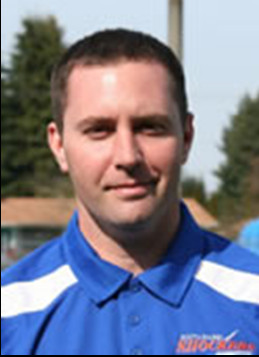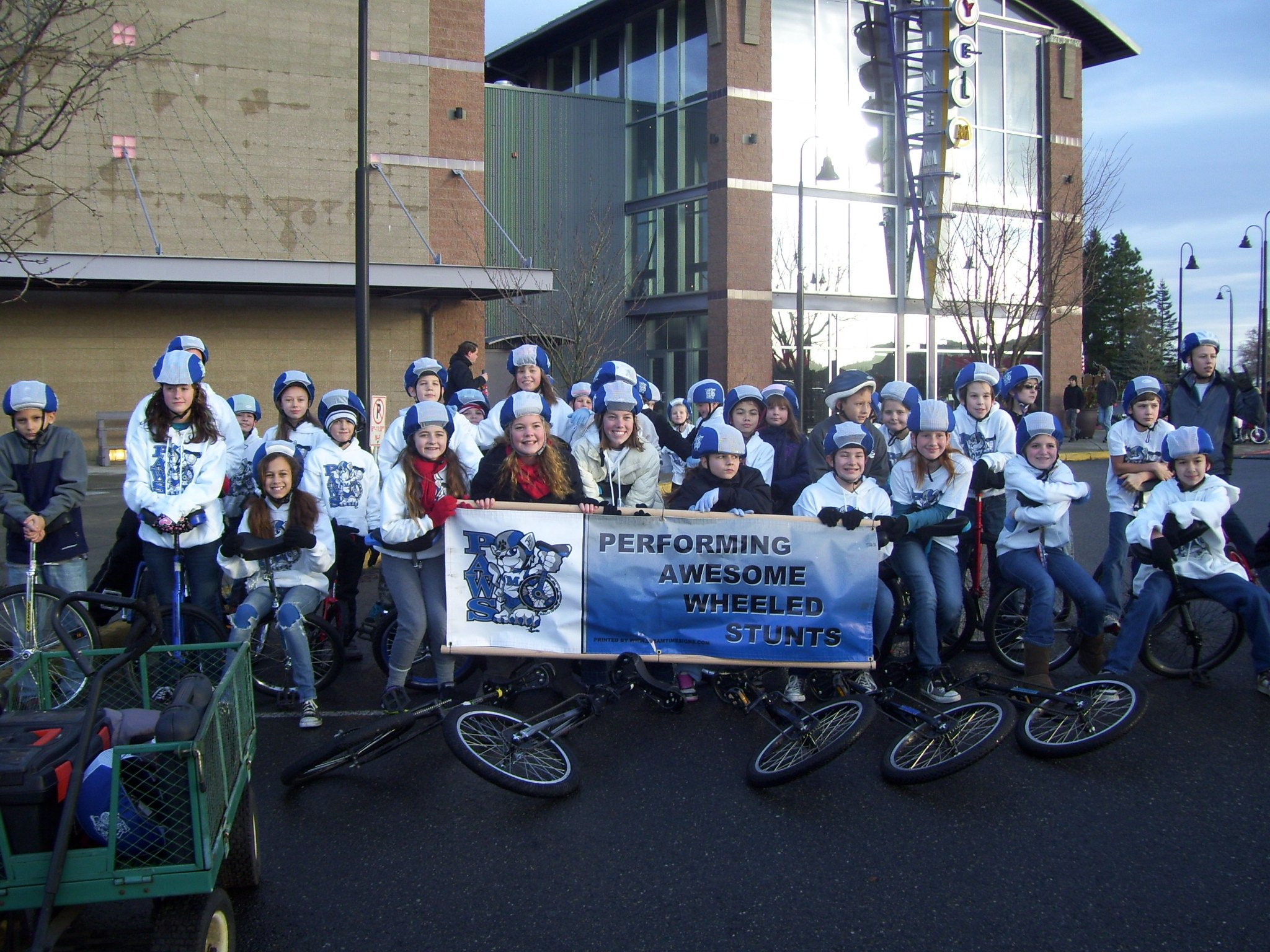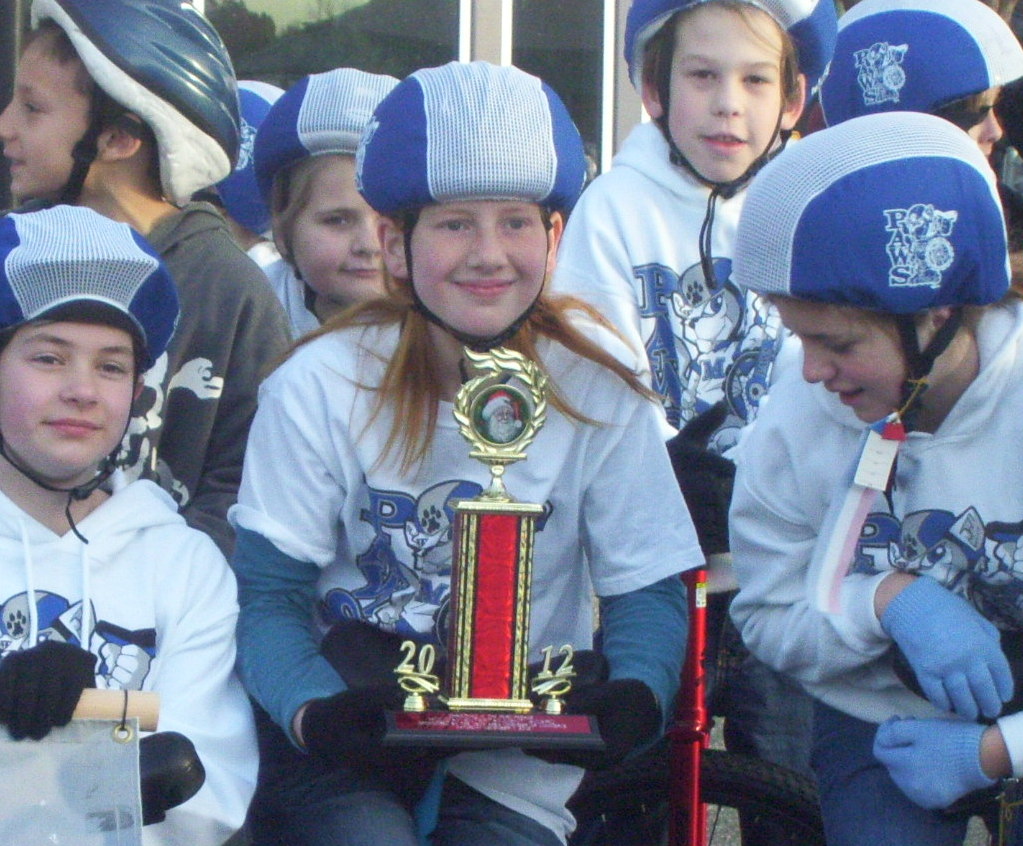What Should Be the Main Focus of Today's PE Teacher?George Goss, McKenna Elementary, WA (home page)
 "Believing we can improve schooling with more tests is like believing you can make yourself grow taller by measuring your height" (Robert Schaeffer). Physical education teachers juggle their time between instructing, assessing skills and fitness levels, managing space, organizing equipment, monitoring behaviors, and much more. I confess I'm confused and frustrated. As educators shouldn't our main focus be on addressing the students' current needs and serving as a resource to their future learning rather than constantly testing? In my experience the teachers that end up being more of an influence on students' pursuit of lifelong fitness are the ones who devote huge amounts of time creating additional physical activity opportunities and experiences in and beyond the school community. "Believing we can improve schooling with more tests is like believing you can make yourself grow taller by measuring your height" (Robert Schaeffer). Physical education teachers juggle their time between instructing, assessing skills and fitness levels, managing space, organizing equipment, monitoring behaviors, and much more. I confess I'm confused and frustrated. As educators shouldn't our main focus be on addressing the students' current needs and serving as a resource to their future learning rather than constantly testing? In my experience the teachers that end up being more of an influence on students' pursuit of lifelong fitness are the ones who devote huge amounts of time creating additional physical activity opportunities and experiences in and beyond the school community.
When I was in elementary school, my PE teacher offered softball practice after school hours to students who were interested in extra physical activity. I used these skills later in adult league games. Our classes were also offered swimming at Timberline High School located across the road. Mr. Myers created additional chances for his students to improve important life skills. His focus was more on giving opportunities rather than assessments.
For the first 11 years of teaching, I had an open gym during recess for students who wanted to practice the skills that reinforced what I was teaching during class. During our dance unit I would have up to 50 students in during recess doing line and partner dances. Unicycles and diabolos became very popular to the point that we created a performance group.
I try to introduce each activity with the understanding that students can approach it with the intention of being a pro, an amateur, or doing it at a recreational level. When I am teaching the skills I emphasize that spending time practicing will help students take their skills to the next level. We also watch DVD's that show championship level jump roping, unicycling, and extreme juggling. I even took three students to the Columbia Sportswear store grand opening where they were able to meet professional unicyclists Dan Heaton, Ryan Atkins, and Jeff Groves. I've taken dozens of students to North Bend, WA to see a championship caliber unicycle team perform and have the chance to learn skills from a more advanced team.
I want students to see how advanced their skills can get with more practice and organized Christian Ruiz diabolo performances which turned into a fundraiser for three elementary schools selling 280 diabolos and 50 books in 2003. Christian produces the Jester Games brand diabolo and came up from Encino, CA for a week, enabling him to also present with me at our state WAHPERD Conference.
When I attended Central Washington University, Physical Education teaching majors were exposed to a variety of activities from the traditional team and individual sports to outdoor pursuits and circus arts. I appreciated the pedagogy classes that helped us to develop a scope and sequence and guide student learning by being able to break down skills into the smallest elements. But the thing I loved most about the program was that I was exposed to more types of physical activities than I ever did growing up. Today, I approach teaching my classes the same way.
My background working with kids before going to college was almost exclusively with coaching youth and high school football. Then as PETE majors we were put into assisting in a youth soccer league, taught cooperative games at a middle school honors camp, and participated in a low and high ropes challenge course at Camp Cispus. Additionally, we were taught how to belay each other and rock climb at an indoor gym and outdoors at Peshastin Pinnacles. I highly doubt I would have ever experienced things like without our professors coordinating activities beyond traditional sports and games on campus. I ended up being a camp counselor and low ropes course facilitator for a couple of 5th grade camps at Cispus. I had learned the skills to be able to teach archery and lead hikes to Angel Falls.
 Educators can be a valuable resource to students through performance groups. Before I came to Yelm Community Schools, a teaching colleague named Wayne Christensen had a circus arts/gymnastics group called DARTS. His students were able to visit colleges and other elementary schools showing off their advanced physical skills. To be on the team, students had to be able to walk on their hands, juggle, and ride unicycles. Educators can be a valuable resource to students through performance groups. Before I came to Yelm Community Schools, a teaching colleague named Wayne Christensen had a circus arts/gymnastics group called DARTS. His students were able to visit colleges and other elementary schools showing off their advanced physical skills. To be on the team, students had to be able to walk on their hands, juggle, and ride unicycles.
My performance groups also get the opportunity to interact with the community. In 2002, I took a group of 9 students to do a diabolo performance at the McKenna Retirement Facility just before Christmas. We followed that with our first assembly at Prairie Elementary with 23 students performing.
In 2007 I began a group of unicyclist called Performing Awesome Wheeled Stunts (PAWS). It started out with 20 students and since then has had as many as 49 participants. We have been in 12 parades, 2 Yelm High School half-time shows, several North Bend's Panther Pride Unicycle Team clinics, and a pre-game show for Seattle Storm. We were able to perform at a CWU Men's basketball game March 1st, 2014. I recently took four students to a luncheon for the School Retirees Association to thank them for a mini grant that enabled us to buy a new 5-foot tall giraffe unicycle.
Our reward trips started in 2010 where we did performances and riding clinics at CWU's PEAK conference for Washington State PE teachers. When we are in Ellensburg I arrange the eating and sleeping arrangements at a university dormitory as well as swimming at the community pool, bowling at the local alley, and rock climbing at the university Recreation Center. We follow these activities with a campus tour via unicycle where I explain to the students the process of college, describe what majors and minors are, and highlight some of what goes on in the different buildings.
 I also took 12 students to the Seattle Underground and Key Arena where they were able to watch the Women's NCAA PAC 12 top 4 teams. As a bonus, I arranged our students to be part of a fan tunnel where they were able to “high 5” the Stanford basketball team in 2013. I can't help but believe that when they are older my students will remember these special times with their friends and the experiences they had much more than their fitness scores. I also took 12 students to the Seattle Underground and Key Arena where they were able to watch the Women's NCAA PAC 12 top 4 teams. As a bonus, I arranged our students to be part of a fan tunnel where they were able to “high 5” the Stanford basketball team in 2013. I can't help but believe that when they are older my students will remember these special times with their friends and the experiences they had much more than their fitness scores.
Physical education teachers can be an active lifestyle promoting resource by simply posting YMCA activities and local sports and recreational opportunities or take more active roles by having school-sponsored events. My all-time favorite memory of going to CWU with the unicyclists was hearing fifth grade girls' conversation about how cool it would be to play soccer at the university. These experiences only motivate me more to be a resource to students by creating meaningful opportunities to be physically and socially active beyond the school setting. Chances are the students will remember those moments and be inspired to pursue active and healthy lifestyles more after these experiences than what they get out of any school tests.
Biography: George Goss teaches physical education at McKenna Elementary School in Yelm Washington. He has written previously about physical education teaching and was featured in a pelinks4u article about unicycling in 2010.
(back
to pelinks4u homepage) |




 "Believing we can improve schooling with more tests is like believing you can make yourself grow taller by measuring your height" (Robert Schaeffer). Physical education teachers juggle their time between instructing, assessing skills and fitness levels, managing space, organizing equipment, monitoring behaviors, and much more. I confess I'm confused and frustrated. As educators shouldn't our main focus be on addressing the students' current needs and serving as a resource to their future learning rather than constantly testing? In my experience the teachers that end up being more of an influence on students' pursuit of lifelong fitness are the ones who devote huge amounts of time creating additional physical activity opportunities and experiences in and beyond the school community.
"Believing we can improve schooling with more tests is like believing you can make yourself grow taller by measuring your height" (Robert Schaeffer). Physical education teachers juggle their time between instructing, assessing skills and fitness levels, managing space, organizing equipment, monitoring behaviors, and much more. I confess I'm confused and frustrated. As educators shouldn't our main focus be on addressing the students' current needs and serving as a resource to their future learning rather than constantly testing? In my experience the teachers that end up being more of an influence on students' pursuit of lifelong fitness are the ones who devote huge amounts of time creating additional physical activity opportunities and experiences in and beyond the school community. Educators can be a valuable resource to students through performance groups. Before I came to Yelm Community Schools, a teaching colleague named Wayne Christensen had a circus arts/gymnastics group called DARTS. His students were able to visit colleges and other elementary schools showing off their advanced physical skills. To be on the team, students had to be able to walk on their hands, juggle, and ride unicycles.
Educators can be a valuable resource to students through performance groups. Before I came to Yelm Community Schools, a teaching colleague named Wayne Christensen had a circus arts/gymnastics group called DARTS. His students were able to visit colleges and other elementary schools showing off their advanced physical skills. To be on the team, students had to be able to walk on their hands, juggle, and ride unicycles. I also took 12 students to the Seattle Underground and Key Arena where they were able to watch the Women's NCAA PAC 12 top 4 teams. As a bonus, I arranged our students to be part of a fan tunnel where they were able to “high 5” the Stanford basketball team in 2013. I can't help but believe that when they are older my students will remember these special times with their friends and the experiences they had much more than their fitness scores.
I also took 12 students to the Seattle Underground and Key Arena where they were able to watch the Women's NCAA PAC 12 top 4 teams. As a bonus, I arranged our students to be part of a fan tunnel where they were able to “high 5” the Stanford basketball team in 2013. I can't help but believe that when they are older my students will remember these special times with their friends and the experiences they had much more than their fitness scores.